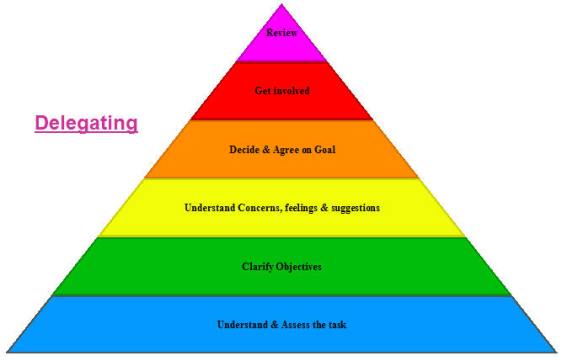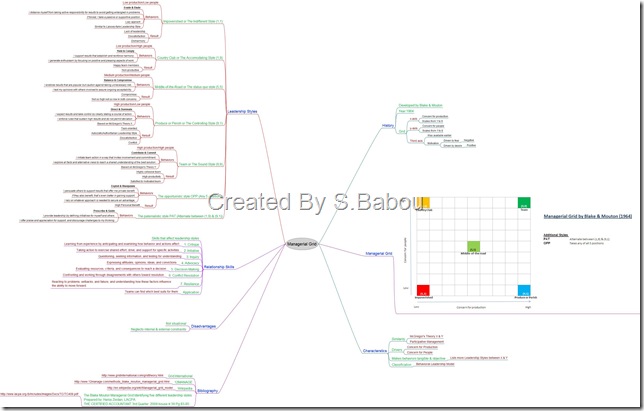What is Delegating?
Delegating is like a magic wand in the hands of smart managers. Delegating is highly effective when used properly but it is a complex one to practice. Whatever be the leadership model, ‘Delegating’ is an undisputed leadership style discussed across all those models.
“Effective delegation takes emotional courage as we allow, to one degree or another, others to make mistakes on our time, money and good name.
Effective delegation must be two-way: responsibility given, responsibility received.”
-Stephen Covey in First things First
Let us review simple definition of Delegating: Delegating is assigning a task that you currently have in your activity list(for which you are ultimately responsible) and assigning it to other person with confidence that he will complete with minimal or no involvement from you.
As far as managers are concerned, Delegating allows them to make the best use of their time and skills, and it helps team member’s growth and develops to reach their full potential in the organization.
Why Delegating is not performed often?
Here are the few reasons managers tell for not delegating a task. Reviewing these would be a good learning on common mistakes which we do.
“I don’t have enough time to delegate properly.”
“I don’t have the skills to delegate well.”
“It’s easier to do it myself than to ask someone else.”
“The people to whom I could delegate are already too busy; don’t have the knowledge, skills, or experience required; or aren’t ready to accept this level of responsibility.”
“I’ve been let down in the past, and if they don’t get the job done, I’ll end up looking bad.”
“Risk taking is not encouraged in this organization, and delegation is risky.”
Why Delegating is required?
There are countless benefits to delegating. Now, let us review few of them:
* Delegation is an effective tool in grooming future managers/leaders
* Delegation is cost effective for the organization
* Delegation helps in time management – when work is in high volume and complex
* Delegation of decision making, participative management, and leading through other leaders are vital to increasing the total power of the manager/leader and the organization
* If delegating is done well, a project manager can quickly build a strong and successful team of people, well able to meet the demands that others place.
* Delegation demonstrates manager’s professionalism and effectiveness
* Delegation creates a win-win situation – The Manager and the organization – gets the work done faster,
The member – gets sense of accomplishment, trust, opportunity to grow and recognition
What are the parameters to do delegating?
Delegating is situation based. So, mainly, its parameters are:
a) Complexity of task in hand,
b) Risk involved if not task completed as expected and
c) Commitment & competence of team member
How to do delegating?
When delegating few things to be kept in mind.
* Delegate the whole job whenever possible – this makes member to feel responsibility which increases motivation
* Avoid upward delegation – that is, avoid having your team member turn to you to solve every problem that they encounter while performing the tasks that you delegated to them.
* Always have progress check points – Delegating is not just giving the work to someone and leaves it. This helps to find out whether the work progress in the right direction & gives more confidence on the timely delivery.
* Don’t delegate if you don’t know about the task – if you don’t know what to do to complete the task then we cannot get it done from others.
* Don’t delegate task that requires confidentiality or sensitive issues – there are few tasks like performance appraisal, interpersonal conflicts, sensitive matters (particularly lay-off) should not be delegated. They are exclusive duties of managers.

Understand & assess the task
Basic step of delegation is understanding & assessing the task you want to delegate. Assessment should be based on delegation parameters – complexity, level of skill, level of commitment, need for involvement. Without proper understanding one cannot delete a task to others.
Clarify objectives
After identifying the resource to do the work, next step is clarifying the objectives to him. Mainly, explain Why -> The purpose, What -> the goal and How -> the boundaries of the task, so the person has a clear picture of what we are wanting to accomplish. Also, talk on the reward, recognition & learning new skills.
Understand Concerns, feelings & suggestions
Also, understand & deal the comfortableness, concerns, feelings & suggestions of the member. Member should feel responsibility & not that he gets only extra work to perform. Based on outcome of this step, you may need to select different resource if there is any conflict of interest.
Decide & Agree on Goal
Next step is agreeing on time line, quality standards, level of your intervention, authority and accountability. This step is vital as this would be the baseline for further verification of work. Delegate the task and not the method to accomplish it. Let your team member will decide that. This makes the member to take personal initiative which gives him sense of contribution. It is important to express confidence on member’s work, your availability for support, and your appreciation during progress.
Get involved
Another important step is staying involved at the level agreed. Maintain open lines of communication. Checking too often or not getting involved will create negative impact. Revisit the frequency of communication based on the situation and negotiate.
Review
Review the work done (not the method) in the agreed time interval and give positive and corrective feedbacks. If you’re not satisfied with the progress, don’t immediately take the project back. Continue to work with the member and ensure they perceive the project as their responsibility. After the final result delivery, take necessary initiative to fulfill the agreed reward.



